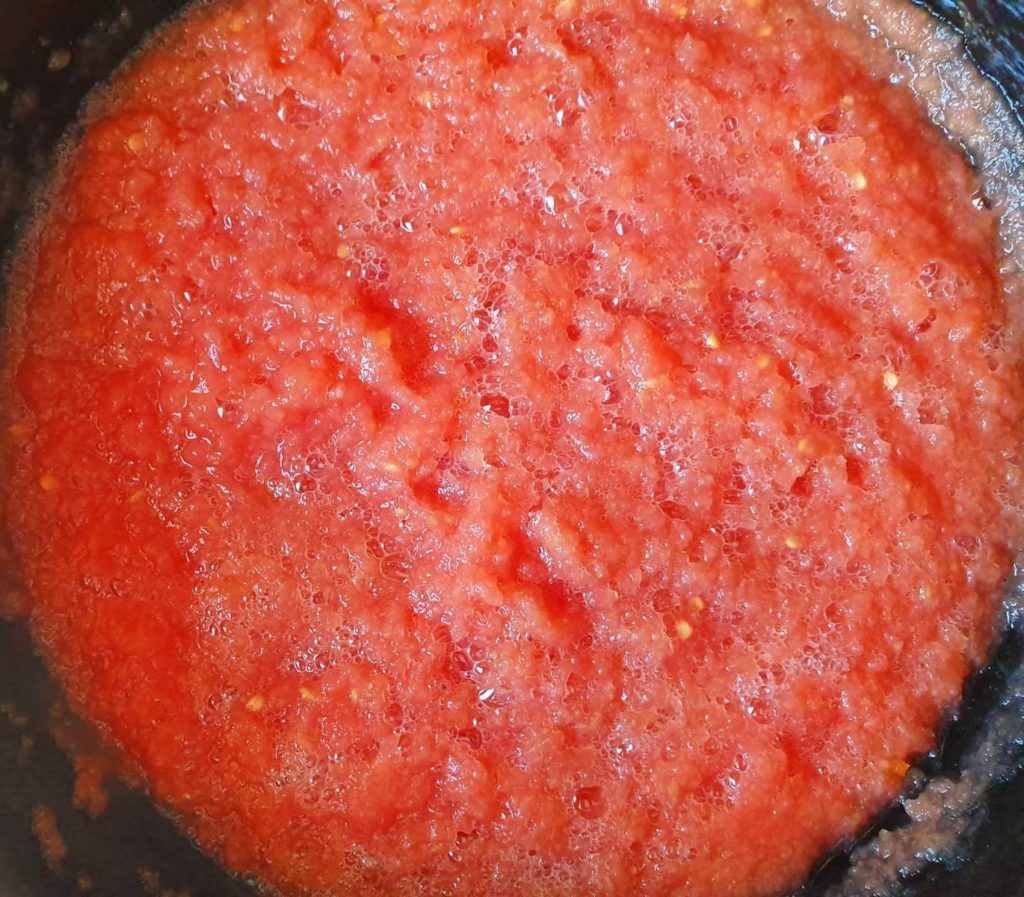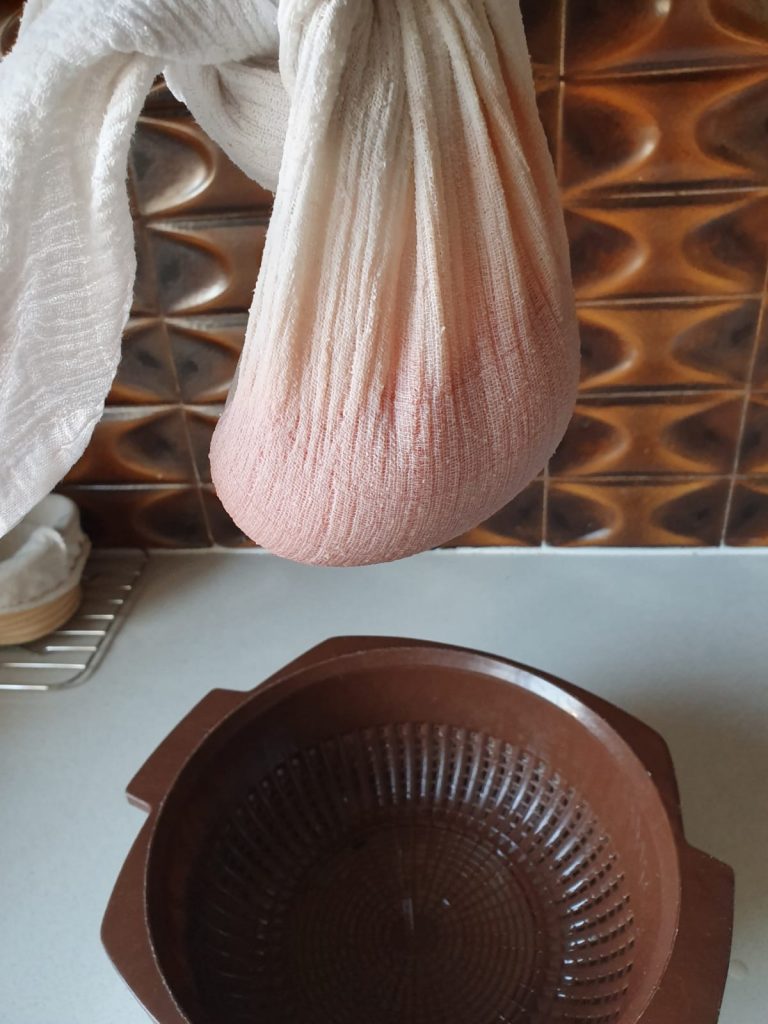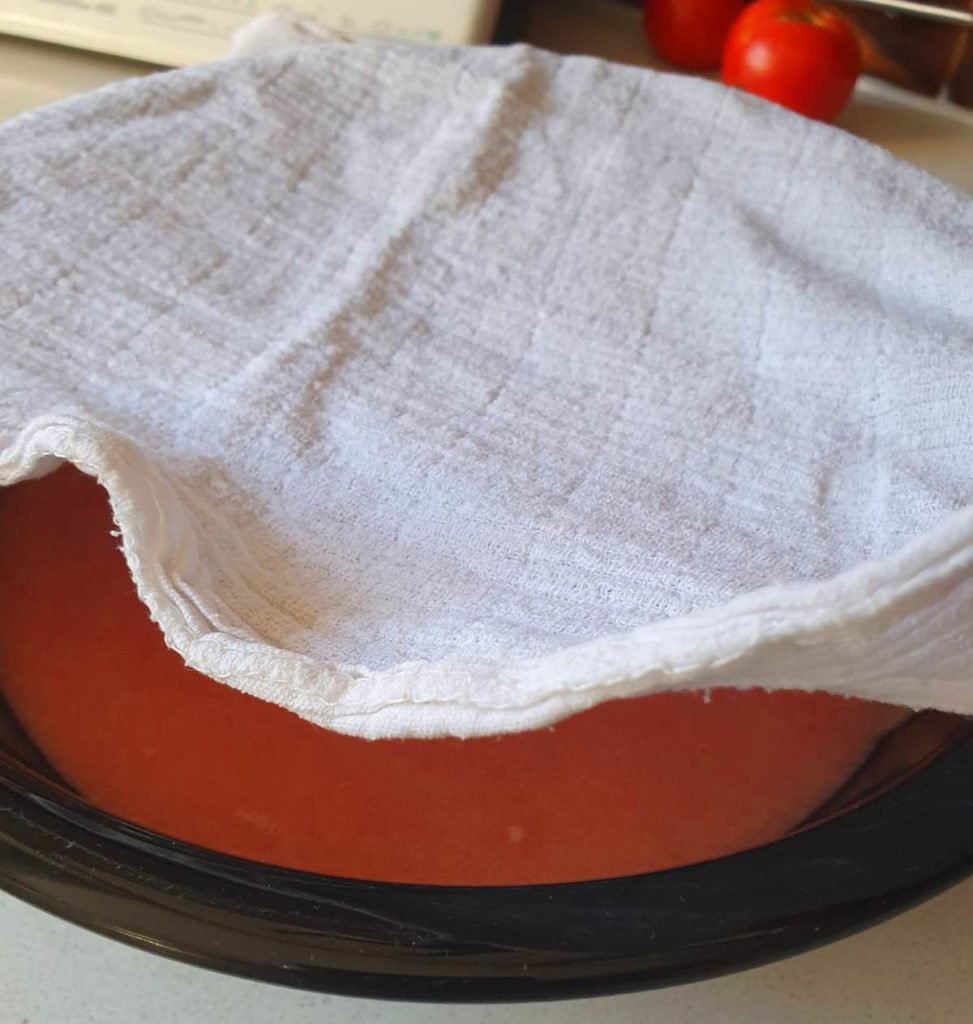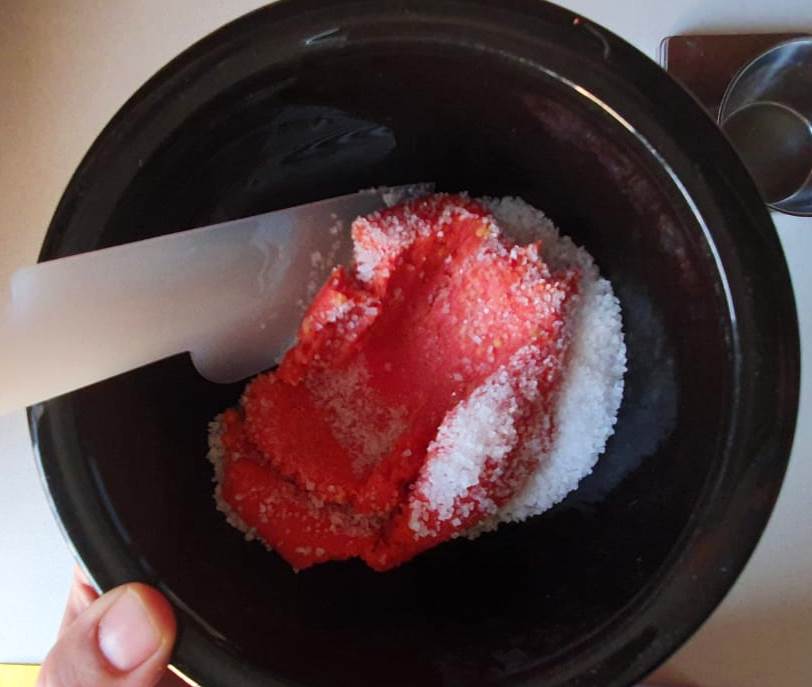I first heard about this recipe for Fermented tomatoes – ‘Conserva Cruda di Pomodoro’ at a fermenting workshop I did with Uri Mayer-Chissick. I tasted the fermented tomatoes and was thrilled by their special taste. They had a sweet, sour and salty taste, all together. It created a celebration of flavors throughout my mouth. All the tastes were so concentrated and diverse throughout the tasting. I immediately knew I had to produce this fascinating paste that could pick up any sauce or dish.
I found an interesting recipe for ‘Conserva Cruda di Pomodoro’ – fermented tomatoes in Sandor Katz’s “The Art Of Fermentation”. If you are planning to prepare ‘Conserva Cruda di Pomodoro’, take into consideration that the process of preparing the fermented tomatoes is taking several days. And then after the end of the fermentation process, it takes another month or more to stabilize flavors.

The recipe creates some reluctance at first, it tells us we’d start to get some bubbling, and then after a few days, a white mold would start to form on the surface. But who wants to mess with mold? But this mold is safe to use. This is a white mold similar to the mold used in the process of aging cheese, and this mold is also what gives the sweetness to the final product. This particular process uses a wild fermentation, meaning the combination of wild airborne yeasts and the naturally occurring bacteria that is on the tomatoes.
If the mold is in a different color than white (green or black), throw it all in the trash to avoid food poisoning.
In Sandor Katz’s recipe, he uses a ‘
The smell was the real surprise; the fermentation process gives off a little smell. You cannot say it’s a bad smell, but if you do the process at home, you’ll definitely need some patience from your partner. The smell is noticeable during the fermentation are a bit sour, sweet and fruity aromas

Similar to the recipe Lacto fermented tomatoes leather, I used organic tomatoes because I feared that the pesticides would damage the fermentation process. As with any fermentation, we want to create a system that is beneficial to the bacteria and not one that can cause harm.

Fermented tomatoes – ‘Conserva Cruda di Pomodoro’
Ingredients:
– Ripe tomatoes
– Salt
Instructions:
- Place a pot of water on the stove and let it come to a rolling boil.
- Using a sharp knife, slice a shallow X into the bottom of the tomato. This will make peeling much easier.
- Gently place the tomatoes into the boiling water.
- Boil the tomatoes until you see the X begin to split open wider, approximately 25 seconds. Do not boil them for longer than 25-30 seconds or they will begin to soften and cook.
- Remove the tomatoes from the boiling water using a slotted spoon.
- Once the tomatoes have chilled, Peel the skins off with your hands.
- Cut the tomatoes in half, and remove the seeds, so we only have the meat of the tomato.
- Grind the tomato meat in a food processor until you get a smooth mixture.
- Pour the mixture into a bowl, cover with a cheesecloth.

- After a day, a white layer of mold begins to form on the surface, mix the mold layer into the tomato mixture. Remember, white mold is good!
- Repeat this process every day for 5 days.
- After 5 days, put the mixture in cheesecloth so it will remove all the liquid. It is recommended to put a weight on the fabric to speed up the process. (if during this time mold accumulates over the cheesecloth, scrape it with a tablespoon)
- Two days later, remove the paste, which has shrunk to a kind of dough, and put it with 25% salt of its weight.

With 25% salt the product
can be preserved indefinitely. You can add only 10% salt and Keep refrigerated.
This site is a participant in the Amazon Services LLC Associates Program and contains affiliate links to products. We may receive a commission for purchases made through these links.